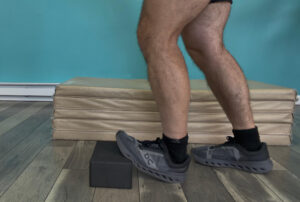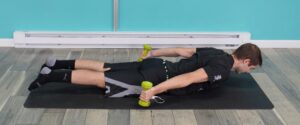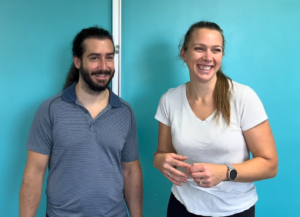In recent years, cupping therapy has surged in popularity, capturing the interest of wellness enthusiasts and alternative medicine practitioners alike. This ancient healing practice, rooted in Chinese medicine, involves placing cups on the skin to create suction. Despite its historical significance and growing modern appeal, there’s not much research on cupping therapy. In this comprehensive guide, we’ll dive into what cupping therapy is, outline the best practices for effective treatment, and bring clarity to some common myths that might be hindering your therapy experience rather than helping.
What Is Cupping Therapy?
Cupping therapy is a traditional healing technique that involves placing special cups on the skin with pressure to create a vacuum effect. This suction is believed to enhance blood flow, promote healing, and alleviate pain. In today’s modern society there are 3 main types of cupping therapy and a variety of different style cups. Cups generally come in 3 forms; glass, plastic, and silicone. The difference in material and hardness makes them good for different forms of cupping.
The Three Types of Cupping Therapy
- Stationary Cupping: This is the most common form of cupping, where you place cups on the skin and suction them without any additional substances. Dry/stationary cupping is often used to increase blood flow and relieve muscle tension. It’s typically using glass or plastic cups and is intended to be used for deeper facial work.
- Dynamic Cupping: Much like it sounds this method uses movement. Silicone cups are most commonly used for their pliability and you’ll find there is less pressure used than the traditional stationary cupping. When moving the cups, you’ll also use an oil to help avoid uncomfortable friction. This more superficial version of cupping is best for breaking up adhesions and scar tissue on a more surface level.
- Flash Cupping: This technique uses a flame to create a vacuum inside the cup before placing it on the skin. The heat expands the air inside the cup, creating a strong suction effect. Fire cupping is less common but is favored for its intense suction and deeper tissue effects. You’ll use this technique for short and very precise cupping. Be Careful!!! Make sure you know the person doing this is experienced

Best Practices for Effective Cupping Therapy
To maximize the benefits of cupping therapy, it’s crucial to follow best practices:
- Consult a Professional: Always seek treatment from a trained and licensed practitioner. An experienced therapist will ensure that cupping therapy is appropriate for your condition and will perform the procedure safely.
- Pressure Matters: The amount of suction applied is critical. Too much pressure can cause unnecessary discomfort and skin damage, while too little may not provide the desired therapeutic effects. The most common pressure is no more than 300mm of HG. We suggest if this is your first time, going light on pressure and seeing how your body responds. A skilled practitioner will adjust the pressure to suit your needs, ensuring a balance between effectiveness and comfort.
- Aftercare: After the treatment, it’s generally not the best time to hit the gym. Keep the area dry and avoid strenuous activities that might aggravate the treated skin. You can work on mobility and stretching exercises, but not much more. It’s definitely not the time to hit the sauna, hot tub, or steam room. This can cause an overreaction to the treated areas. Instead of getting your sweat on, make sure you stay hydrated!
- Time Matters: You don’t want to have cups on for more than 5-15 minutes. This duration of time is enough to get deep work into those muscles without overdoing it. If you let them stay on longer you risk breaking down too much tissue and actually causing harm instead of good.
Debunking Common Cupping Myths
- Myth: Bruising Indicates Effectiveness – One of the most common misconceptions is that the severity of bruising indicates the success of the therapy. In reality, bruising is not a reliable marker of efficacy. While some discoloration can occur, it is not a direct indicator of how well the therapy is working. Effective cupping should focus on the overall improvement in symptoms rather than the appearance of bruises. Everyone is different and your body will react differently. Start light on pressure and work your way up!
- Myth: Cupping Therapy Removes Toxins – Research has shown that post cupping blood has just as many toxins in it as pre-cupping. The release you feel in your muscles is relaxation with extra blood flow.
- Myth: Cupping Therapy Is Only for Athletes – We all saw those Olympains with their cupping bruises. While cupping is a common use for muscle pain and tension for many elite athletes, its best use is for anyone looking to feel better and move better. You don’t need to have any athletic background at all for cupping to be beneficial and effective for you.
Cupping Isn’t For Everyone

I know what you’re thinking… you just said it’s good for everyone! And for the most part, it is. There are a few exceptions to be mindful of. Before reading our list of hard no’s and ask your physician, we always strongly recommend you to talk with a trusted professional before trying any kind of alternative medicine to make sure it’s right for you.
Do Not Use:
- Deep Vein Thrombosis – DVT
- Varicose Veins
- Acute Fractures – (recently broken)
- Infections (Staphylococcus among others can be quite dangerous)
- Open Wounds
Proceed with Caution:
- If you’re pregnanat (There just isn’t research to show how this can impact you)
- Using Blood Thinners (you’re more likely to bruise – lighter pressure is a must)
Cupping therapy remains a fascinating and effective modality within the realm of alternative medicine. By understanding what cupping therapy truly involves, adhering to best practices, and dispelling common myths, you can make informed decisions about incorporating this therapy into your wellness routine. Whether you’re seeking relief from muscle pain or exploring holistic health options, cupping therapy offers a time-tested approach that continues to evolve and adapt to modern health needs.
Watch Our Cupping Therapy Video
If you found this guide helpful, feel free to share it with others who might benefit from a clearer understanding of cupping therapy. For more insights into alternative medicine and wellness practices, stay tuned to our blog.
Improve Your Daily Life in 10-15 Minutes
It might be hard to believe but it really is true.
You can make a big impact on how you feel day to day by incorporating 10-15 minutes of mobility work into your day.
It doesn’t have to be hard. Just quick and simple exercises can improve your posture, back pain, shoulder discomfort, knee pain, you name it.
Join MDFit Essentials for daily programming that will change your life!
Stop saying you don’t have time but sit on the couch for 2 hours before bed… Take 15 minutes (while watching TV) to improve your movement so you can feel better.





